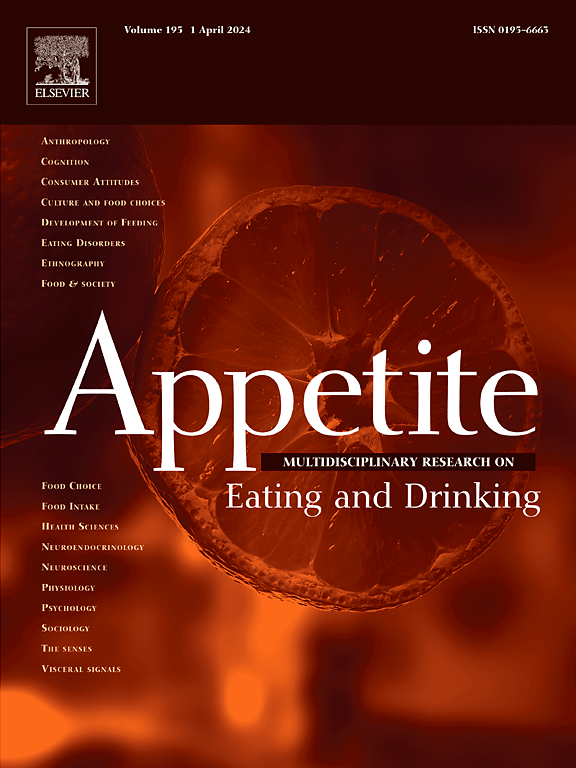Application of functional ingredients in meat products for appetite regulation: A promising strategy to address overconsumption
IF 4.6
2区 医学
Q1 BEHAVIORAL SCIENCES
引用次数: 0
Abstract
Functional meat products to reduce appetite is a feasible approach to decreasing meat consumption, especially in the current global pandemic of overweight and sustainability issues in meat production. The meat itself is highly satiating because of its high protein content. Dietary fibre and plant protein, both naturally occurring macromolecular compounds with appetite-suppressant properties, work synergistically with the meat itself to create a feeling of fullness. Dietary fibre consumption induces satiety by improving structural complexity and chewing time. Increasing protein content improves the volume and texture of the product. The overall effect on appetite varies widely with ingredient and meat product types. By-products, mycoproteins, and insects have the potential to generate functional and sustainable meat products. The incorporation of functional ingredients improves the yield and textural complexity of meat products, albeit at the expense of sensory properties. The complex interactions among food structure, texture, oral processing, and satiety/palatability warrant additional study to inform the design of meat products that maximise the contribution to appetite control. This review aims to provide an overview of the types of ingredients used in the preparation of functional meat products and their effect on controlling appetite.
降低食欲的功能性肉类产品是减少肉类消费的一种可行方法,尤其是在当前全球普遍超重和肉类生产可持续发展问题的情况下。由于蛋白质含量高,肉类本身具有很强的饱腹感。膳食纤维和植物蛋白都是天然存在的大分子化合物,具有抑制食欲的特性,它们与肉类本身协同作用,产生饱腹感。膳食纤维通过改善结构的复杂性和咀嚼时间来诱发饱腹感。增加蛋白质含量可改善产品的体积和质地。对食欲的总体影响因配料和肉制品种类的不同而有很大差异。副产品、霉菌蛋白和昆虫具有生产功能性和可持续肉制品的潜力。功能性配料的加入提高了肉制品的产量和质地的复杂性,但同时也牺牲了感官特性。食品结构、质地、口腔加工和饱腹感/适口性之间复杂的相互作用需要更多的研究,以便为设计最大限度地促进食欲控制的肉类产品提供信息。本综述旨在概述用于制备功能性肉制品的配料类型及其对控制食欲的影响。
本文章由计算机程序翻译,如有差异,请以英文原文为准。
求助全文
约1分钟内获得全文
求助全文
来源期刊

Appetite
医学-行为科学
CiteScore
9.10
自引率
11.10%
发文量
566
审稿时长
13.4 weeks
期刊介绍:
Appetite is an international research journal specializing in cultural, social, psychological, sensory and physiological influences on the selection and intake of foods and drinks. It covers normal and disordered eating and drinking and welcomes studies of both human and non-human animal behaviour toward food. Appetite publishes research reports, reviews and commentaries. Thematic special issues appear regularly. From time to time the journal carries abstracts from professional meetings. Submissions to Appetite are expected to be based primarily on observations directly related to the selection and intake of foods and drinks; papers that are primarily focused on topics such as nutrition or obesity will not be considered unless they specifically make a novel scientific contribution to the understanding of appetite in line with the journal's aims and scope.
 求助内容:
求助内容: 应助结果提醒方式:
应助结果提醒方式:


